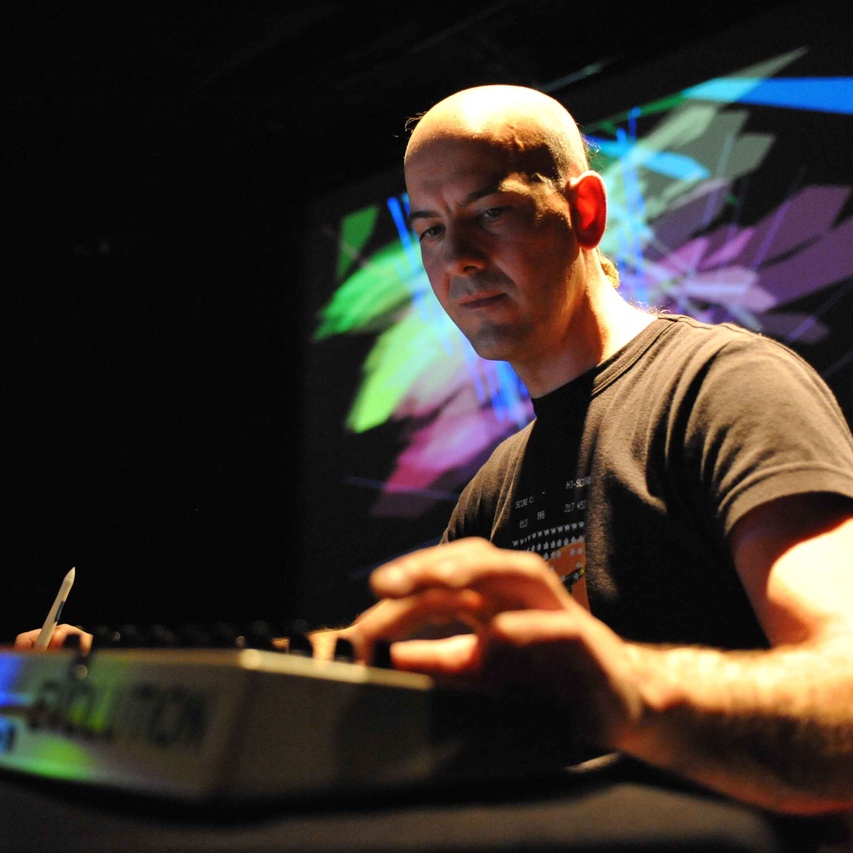Les Mercredis de STMS accueillent Nicolas Souchal, doctorant dans l’équipe Analyse des pratiques musicales (APM) et Diemo Schwarz de l’équipe Interaction Son Musique et Mouvement (ISMM) du laboratoire. Ils présenteront ensemble leur travail intitutlé Augmentation Audio–Visuelle de la Trompette: Entre contrôle et imprévisibilité dans une collaboration recherche-création sur le long terme.
Résumé :
Tout d'abord, nous présenterons Augmented Trumpet, une trompette audio-augmentée utilisant principalement le son de l'instrument lui-même pour piloter le traitement sonore, à la différence d'instruments augmentés traditionnels basés sur des capteurs. S'appuyant sur l'analyse sonore en temps réel pilotant des traitements tels que la synthèse additive, les résonateurs ou l'auto-convolution, ce projet a pour objectif principal d'explorer les relations entre l'humain et l'instrument augmenté qui introduisent de l'imprévisibilité, passant tant par des moments de contrôle que des moments d'adaptation à des situations de non-contrôle, ce qui est particulièrement intéressant dans la pratique de l'improvisation. Au cours de cette collaboration recherche-création sur le long terme, nous avons développé les mappings analyse-synthèse les plus pertinents musicalement. L'adoption d'une approche basée sur la pratique, fondée sur des principes auto-ethnographiques, a permis d'adapter et d'affiner le développement technologique en fonction des exigences musicales, allant au-delà du cadre des simples traitements audio vers un champ où l'environnement acoustique devient moins prévisible et plus un partenaire d'improvisation.
Article à venir, présenté aux JIM 2025: Nicolas Souchal, Diemo Schwarz, Acoustic Augmentation of the Trumpet — Navigating Control and Unpredictability in a Long Term Research–Creation Collaboration.
Ensuite, nous présenterons et performerons Extense, incluant Augmented trumpet, et lui ajoutant une augmentation vidéo dans laquelle le son de la trompette contrôle la navigation dans un corpus d'images tiré de dessins d'Elizabeth Saint-Jalmes. Pour cela le principe de synthèse concaténative interactive basée sur un corpus, jusqu'à présent appliqué le plus souvent au son, est étendu au domaine visuel. Au lieu de créer de la musique en naviguant à travers des grains sonores dans un espace de descripteurs audio, un corpus d'images fixes a été construit. En calculant les descripteurs d'images (tels que la couleur, la texture, la luminosité, l'entropie, etc.), ce corpus peut être parcouru de manière interactive, le contrôle étant assuré soit par la reconnaissance des gestes à l'aide de capteurs de mouvement, soit par l'analyse audio de la performance de la trompette. L'un des principaux défis de ce système performatif est d'explorer les moyens, dans le domaine du traitement de l'image, d'établir des liens significatifs entre les descripteurs d'images et les descripteurs de sons.
Le corpus visuel est tiré de l'œuvre d'Elizabeth Saint-Jalmes, en particulier des séries Révolution, Sans titre, Afflux et Orgasmes crus. Les topologies qui émergent dans ces œuvres entrent en résonance avec celles présentes dans l'audio-Trompette augmentée. Pour construire ce corpus, plus d'une centaine de photographies et de scans haute résolution des œuvres de l'artiste ont été réalisés, suivis de l'acquisition et de la numérisation de ces images.

Biographies :
Nicolas Souchal –trompettiste
Nicolas Souchal est un trompettiste actif sur la scène du jazz contemporain et des musiques improvisées. Récemment il a joué et enregistré avec neigen (avec Jean-Luc Cappozzo, Michael Nick, Daunik Lazro, label Ayler Records), Gummi (avec Simon Henocq et Michael Nick, label Coax), et El Memorioso (Xavier Camarasa, Julien Pontvianne, Olivia Scemama, Augustin Bette, Céline Grangey, labels Nunc et LFDS). Il joue dans le grand ensemble Pensées Rotatives de Théo Girard. Actif au sein du collectif Le Fondeur de Son, il est membre du big band ARBF, dirigé par Yoram Rosilio.
Doctorant à l’Université Paris 8 | Vincennes - Saint-Denis, laboratoire Musidanse et à l’IRCAM, l’équipe APM (Analyse des Pratiques Musicales), ses recherches portent sur les pertes de contrôle dans les processus improvisés.
Diemo Schwarz - informatique musicale et video, design d’interaction
Diemo Schwarz est musicien improvisateur et compose pour des installations, la danse et la vidéo. Il est aussi chercheur en interactions musicales temps-réel à l’IRCAM, équipte STMS, et développeur en arts numériques.
Il joue avec l’électronique des matières riches en timbres et textures, explorant différents corpus de sons à l’aide de contrôleurs gestuels, permettant ainsi à l’expressivité et au corps de dialoguer avec l’instrument numérique.
Son utilisation de la synthèse concaténative recompose l’espace des sons et interroge leurs qualités intrinsèques. Ses recherches scientifiques à l’IRCAM portent sur l’interaction entre musicien et machine, et l’exploitation de grandes masses de sons pour la synthèse sonore temps-réel et interactive, en collaboration avec des compositeurs, ou pour des installations grand public avec des interfaces tangibles intuitifs.